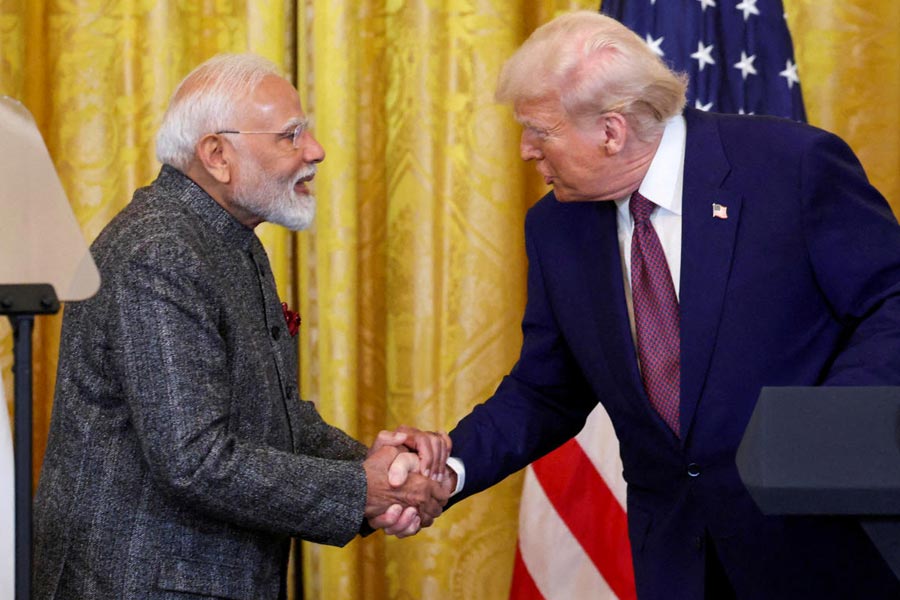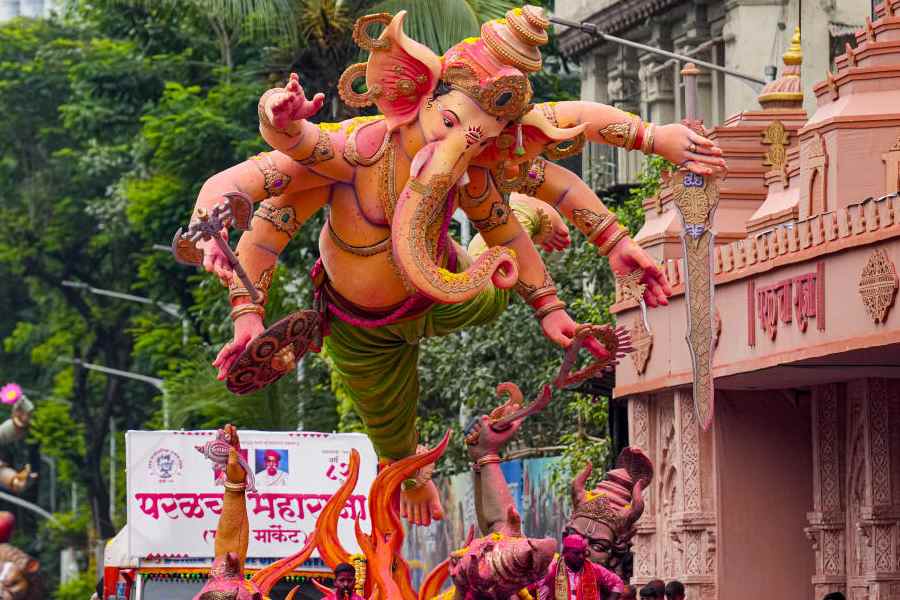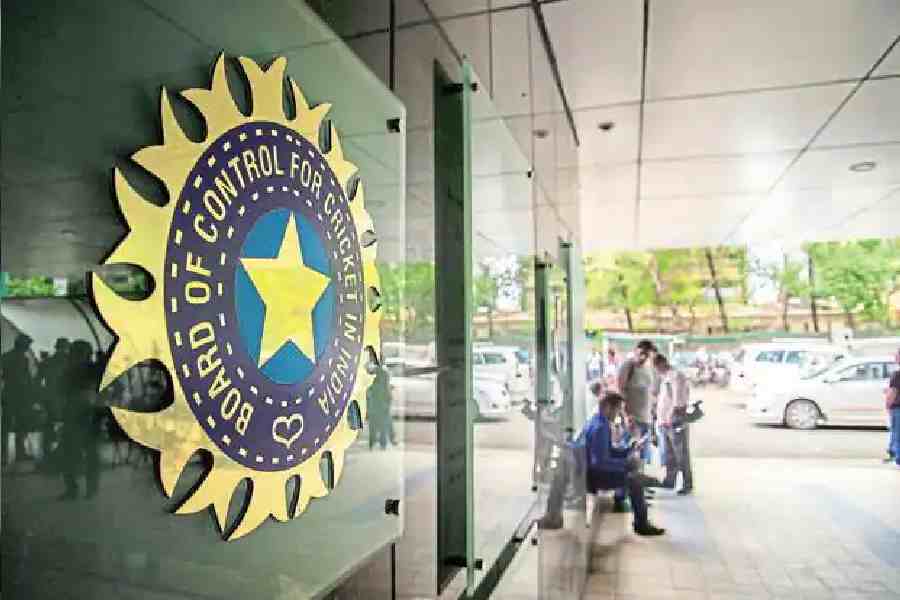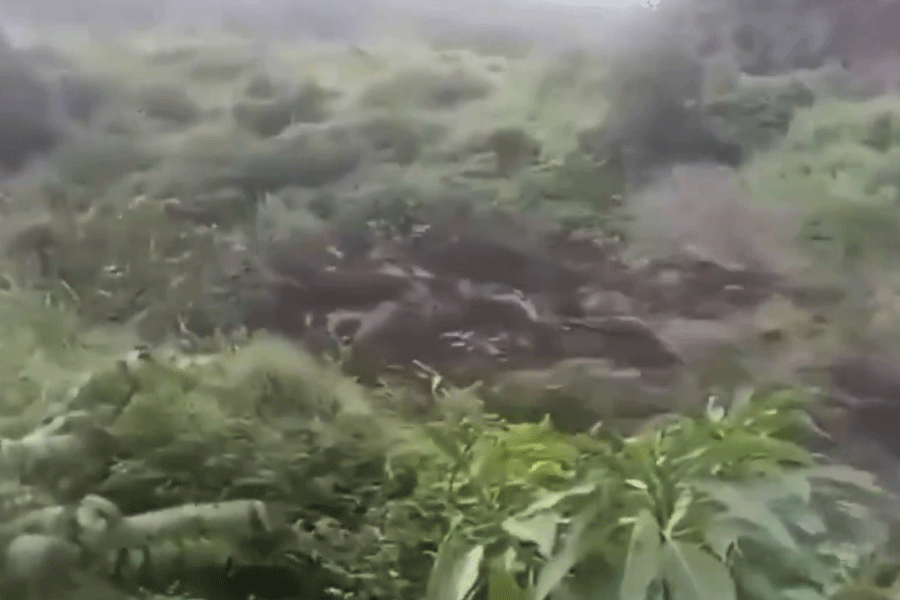Unreal city
Sir — I am amused every time I enter into a debate with ardent Calcuttans about the origin of the name, “Moira Street”. Most people seem to believe that the name commemorates the folk singer, Bhola Moira, or has something to do with this sweet-maker. But the reality is quite different.
Moira Street is named after Francis Rawdon-Hastings (not to be confused with Warren Hastings), who was the governor-general from 1813 to 1823. Most public places in Calcutta had been named after him. He held a number of titles in the English peerage, including Baron Rawdon, Baron Hungerford, Baron (and later Marquess) Hastings, and Earl of Moira, the last contributing to the street name. The earldom of Moira derives from the village of Moira in the English county of Leicestershire. For each of Rawdon-Hastings’s titles, we have a street in Calcutta — Rawdon Street, Hungerford Street, Moira Street, Hastings Bridge over Tolly’s nullah, and Hastings Colony on Strand Road. Even Loudon Street was named after his wife, who was the Countess of Loudon. (This bit of history can be found in The Story of Government House by N.V.H. Symons, Bengal Government Press, 1935.)
Interestingly, post-Independence, the civic body has renamed all these streets, except Moira Street, thanks to the widespread misconception. Sarojini Naidu has ousted Rawdon, the great scientist U.N. Brahmachari has replaced Loudon, and for reasons best known to the then mayor, Hungerford Street had been renamed ‘Picasso Bithi’. The name of the quaint and obscure English village now remains one of Rawdon-Hastings’s last links to the city from where he held sway over the whole of British India for a decade.
The misconception regarding the name of Moira Street is probably due to the fact that Bengalis tend to associate Moira Street with their beloved mahanayak, who not only had a house on that street, but also played the title role in the 1977 film, Bhola Moira. However, there is good news for those fans of Bhola Moira who might be dismayed at this revelation. There happens to be a Bhola Moira Lane somewhere in north Calcutta in memory of his music.
Yours faithfully,
Sourav Sengupta, Calcutta
Sir — About 20 years ago, my family and I moved into a flat in Moore Avenue, behind the Regent Park police station. We never had to use a mosquito net at that time. When the extension work of the Metro started over the Adi Ganga, the usual flow of the canal was disturbed and within days we were all using mosquito nets and coils. After the extended Metro started running, the mosquito problem was checked a bit, but recently it has increased greatly.
The canal is now stagnant. When will the authorities clean this polluted water body chocked with filth and germs? If they cannot clear it, they can at least fill it up and construct a road over it. That way, Calcutta would have another road connecting Tollygunge with Garia, and we would be spared the polluted fumes rising from this bog.
Yours faithfully,
Debarya Banerjee, Calcutta
Sir — Advertisements play a vital role in promoting business nowadays. So hoardings are sprouting all over Calcutta — at roadsides, on rooftops, in vacant public spaces as well as on private lands. Sometimes the Calcutta Municipal Corporation takes steps to dismantle the unauthorized billboards but, needless to say, most remain. To illuminate the hoarding by the side of the Bagzola canal at the Kestopur bus stand, one diesel generator runs from 6 pm to 10 pm every evening throughout the year. The generator causes sound pollution for four hours a day on an average. It also emits carbon monoxide, which is harmful for the people who have to wait at the stand for boarding buses or autorickshaws.
VIPs pass by this way regularly while making the journey to the airport. But obviously they, along with the staff of the Gopalpur-Rajarhat Municipality, are not bothered. The West Bengal state electricity board supplies electricity to this area. How can it allow a diesel generator to provide electricity to the billboard on a permanent basis?
Yours faithfully,
P.K. Chaudhuri, Calcutta
Sir — The road-dividers of Salt Lake have turned into garbage dumps. The worst affected is Sector-1, between AE and BE Blocks, but other places of Salt Lake have also not been spared. On every divider there are dead leaves and scattered rubbish, as the Bidhannagar municipal authorities never care to clean these places.
The local people are also to be blamed for this. They lack civic sense. I once saw a person dumping the garbage on the divider although the dustbin was only a few feet away. Would the Bidhannagar municipality ever wake up to its tasks? And when will people learn the proper use of dustbins?
Yours faithfully,
Devraj Saha, Calcutta
Sir — There is a big garbage vat at K.K. Tagore Street near the Kalakar Street-Pathuriaghata crossing. The wastes from the vat spill over to block half the main road. This deplorable situation is a recent development, thanks probably to a deterioration of the CMC work culture. Now the area resembles hell. I have seen similar scenes only at Benaras.
At Lower Rawdon Street, the CMC had once silted the drains and had left the muck on the footpath for more than a month. After a few days, it rained and the street was flooded. All the silt was thus washed back to the drains.
Yours faithfully,
Shiv Shanker Almal, Calcutta
Sir — Although accidents on the roads of Calcutta have become a common feature nowadays, the authorities have done precious little to minimize such tragedies. The stretch between Sukanta Setu and Baghajatin Hospital on Raja S.C. Mullick Road is possibly one of the busiest stretches in that part of the city. Vehicles of all types — from rattling government buses, frenzied public buses desperate to overtake one another, minibuses stopping wherever they please to pick up passengers, trucks, cycle rickshaws, innumerable private cars to the incorrigible autorickshaws flouting all traffic rules with impunity — ply this stretch everyday. Crossing this road is a nightmare. It is even risky to stand on the road in the absence of any pavement or divider.
Yours faithfully,
Adhip Kumar Bose, Calcutta











